#appalachian magic
Text
Anyone have good resources for Appalachian folk magic/witchcraft? Trying to get into as a baby witch who's also Appalachian but I'm struggling to find resources since it's so specific lol
#magick#witchcraft#appalachia#Appalachian#appalachian folk magic#Appalachian magic#appalachian witch#Appalachian witchcraft#folk magic
218 notes
·
View notes
Text
"When planting crops, herbs, or flowers, my family always faces the east, because that's where Christ is believed to be coming from and he is the “bread of life,” symbolizing that all good food comes from that auspicious direction. Facing east, we make a hole with a stick into the soil. As we're placing the seeds into the holes, we sing a planting tune:
'Some for the birds and some for I,some for the beetle and some for the fly.Some to rot and some to grow, Lord, bless these seeds I now do sow.'
I imagine the symbolism of the bird, beetle, and fly is calling for good germination and pollination for another generation of the seed for harvest. It was also to offer a bit of the bounty to those called up in the rhyme in order to keep away thievery on the part of the bird, beetle, and fly by offering them their due up front."
—
Backwoods Witchcraft:
Conjure & Folk Magic from Appalachia
5: 'From The East, From The West - Living by Signs and Omens'
by Jake Richards
#aside from the christian symbolism the East is also a djrection associated with raw power#planting#crop magic#this is helpful for things like a strong harvest#plant magic#backwoods witchcraft#jake richards#folk magic#appalachian magic#appalachian folk magic
81 notes
·
View notes
Text
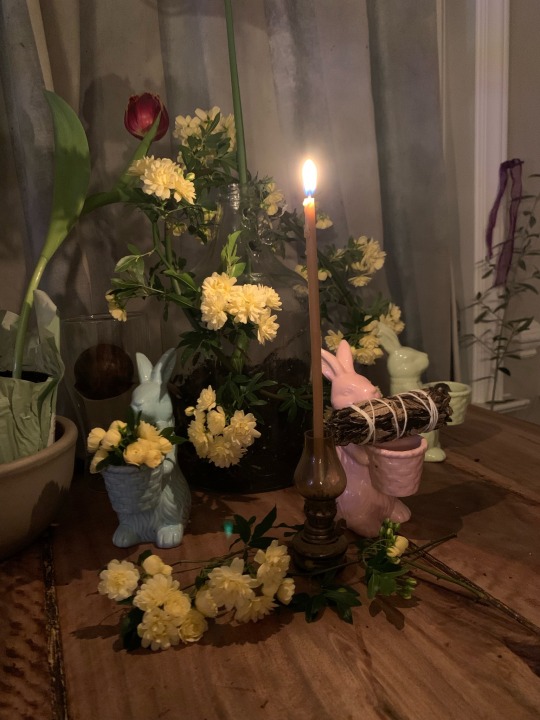

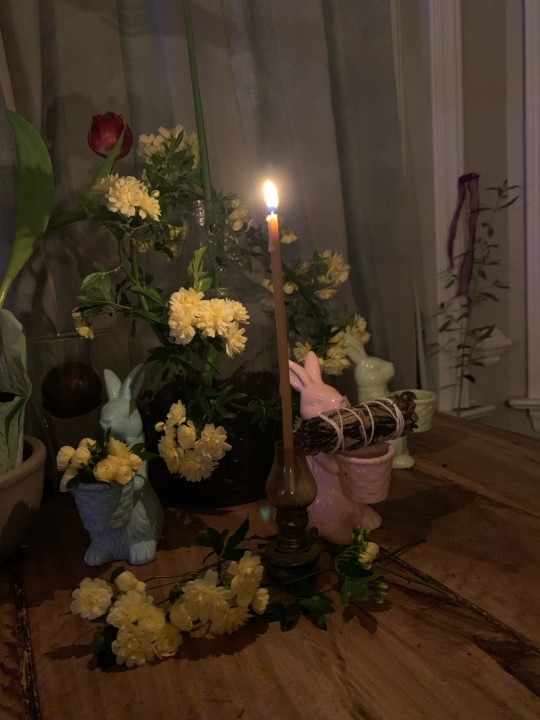
happy full moon
#full moon#full moon cleanse#moon cleansing#cleansing#cleanse your mind#cleanse your soul#moon child#moon girl#appalachia#Appalachian magic#earth magic#nature magic#christian magic#christian girl#with good ol southern magic#energy#bless us#protection#plant magic#plant aesthetic#flower aesthetic#march#it’s march#march comes in like a lion#good magic#light magic#mountain woman#healing women#negativity be revoked#saging
19 notes
·
View notes
Text
It's appalling how there are so many people who want to take up folk magic while also being classist and spreading harmful stereotypes about the people from the region said folk magic comes from.
#folk magic#folk witchcraft#witchblr#serpentandthreads#folk witch#looking at you people trying to take up appalachian folk magic while also spreading the same classist stereotypes#classist stereotypes that have been used over the past 100+ years no less
579 notes
·
View notes
Text
Happy Early Equinox To Those Who Celebrate
🍂🍁🍂🍁🍂🍁🍂🍁🍂🍁🍂🍁🍂🍁🍂🍁
Fall is Officially Upon Us

#witches#witchblr#witch#witchcraft#appalachian folk magic#grand magus#magi#mage#magick#magic#autumn equinox#fall equinox#goetia demon#demon#demonology
473 notes
·
View notes
Text
Please read Mountain Magic by Rebecca Beyer
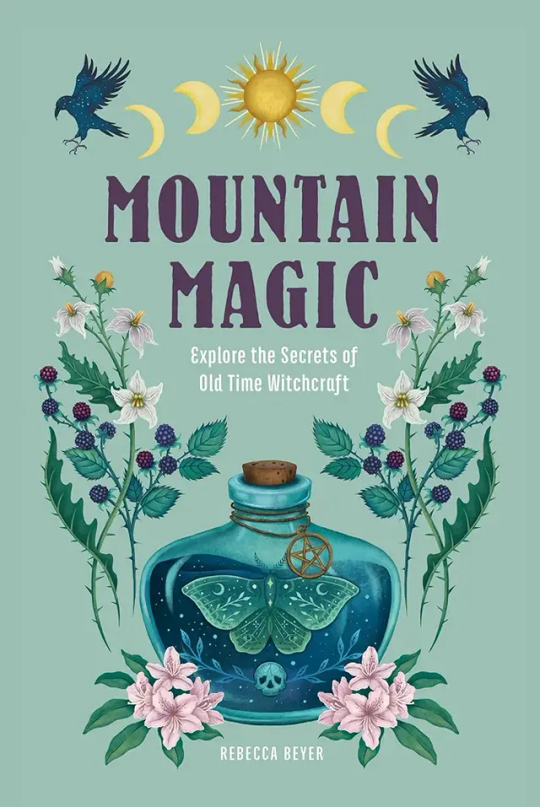
I was on a break from social media when I read this one, so this isn't a full review, but I highly, highly recommend this book to anyone interested in Appalachian folk magic. This is especially relevant to Southern Appalachian lore since Beyer lives in North Carolina.
I loved Beyer's first book, Wild Witchcraft, and with this one, I think she's officially become one of my favorite authors. This is a very thorough collection of folklore and practice for how short it is, and it's organized in a way that is easier for my ADHD brain to follow than some other authors.
I also have to gush about the illustrations. Both of Beyer's books are beautifully illustrated, but I think the art in this one is especially incredible. It's worth having a physical copy for the info alone, but the gorgeous art really makes this a book I want to display in my home.
Finally, I've found Beyer really helpful as an example of combining a pagan religious worldview with a Christian folk magic tradition. Her first book is very much pagan, with info on the God and Goddess and the Wheel of the Year. In this book, she talks about how Christianity has always been at the core of Appalachian folk magic and doesn't try to "paganize" the practice, while also leaving room for readers to bring their own beliefs to the table and explore what feels comfortable for them. This book did not feel preachy in the way some books on American folk magic do.
But yeah, this is just a really fantastic book, and I absolutely think every folk witch needs a copy of it on their shelf!
#mountain magic#rebecca beyer#books#favorite books#appalachian folk magic#appalachian folklore#southern appalachia#folk magic#folk witchcraft#traditional witchcraft#mine#book rec#book recommendations#witchblr#witch#witchcraft
172 notes
·
View notes
Text
My journey into Appalachian Witchcraft-
Being from Appalachia, it was only natural to pursue this path. But it wasn't until recently that I realized it had always been a part of me. For example, one day I was at the creek with my grandmother and i found a hagstone. She smiled and told me i should put it in a mojo bag. At the time i didn't know what that was, and upon researching it i was surprised. My grandmother is a devout christian, but she believes in spirits and sees them. She asked to borrow a turkey feather i'd found to do a cleansing ritual. My grandfather always said the dog was "chasing boogers" when she was outside at night. (Boogers is an appalachian term for ghosts/monsters). It was little things like this that drew me towards witchcraft, though many people here, (mainly older folks) don't use that term. This is a rambling mess, but if anyone has good NON WICCAN resources for appalachian witchcraft please comment them!
#appalachia#appalachian witch#appalachian witchcraft#folk magic#folk witchcraft#witchblr#witchcraft#witch community#christopagan#christian witch#christopaganism#paganblr#pagan witch#paganism#pagan#witchcraft community#pagan community
177 notes
·
View notes
Text

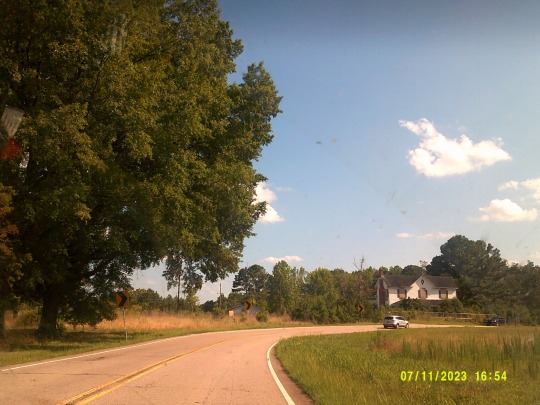
#appalachian gothic#southern gothic#southern folk magic#haunted mound#liminalcore#rurex#appalachia#outdoors#nature#oddcore#weirdcore#drainer#north carolina#rural gothic#religous core
433 notes
·
View notes
Text



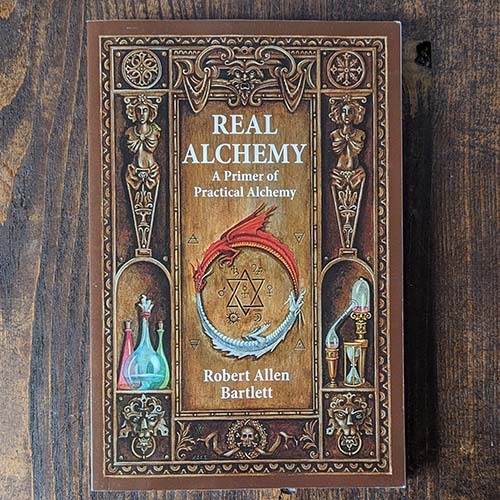


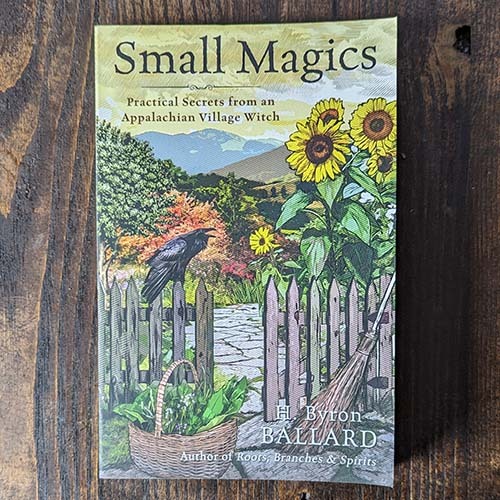



New in the Spiral House Shop!
September 29, 2023
The Long Hidden Friend by John George Hohman Edited and Illustrated by Gemma Gary
Magic: A History: From Alchemy to Witchcraft, from the Ice Age to the Present by Chris Gosden
The White Deer: Ecospirituality and the Mythic by Melinda Reidinger
Real Alchemy: A Primer of Practical Alchemy by Robert Allen Bartlet
Visual Alchemy: A Witch's Guide to Sigils, Art, and Magic by Laura Tempest Zakroff
How to Deal: Tarot for Everyday Life by Sami Main
Small Magics: Practical Secrets from am Appalachian Village Witch by H Byron Ballard
The Seed & Sickle Oracle Deck by Fez Inkwright
Crafting a Daily Practice: A Simple Course on Self-Commitment by T Thorne Coyle
The Gorgon's Guide To Magical Resistance edited by Laura Tempest Zakroff
#laura tempest zakroff#gemma gary#traditional witchcraft#appalachian witch#small magics#witchblr#tarot#alchemy#real alchemy#history of magic#white deer#witch shop#witch books#seed and sickle
204 notes
·
View notes
Text
Sweetgumballs in Folk Magic
Sweetgumballs, also known as witches burrs, are spikey seed pods that grow on liquidambar trees, which have pentagram shaped leaves. They are said to ward off evil spirits, protect agaisnt curses and hexes, attract good luck, and provide healing with headaches, toothaches, etc.
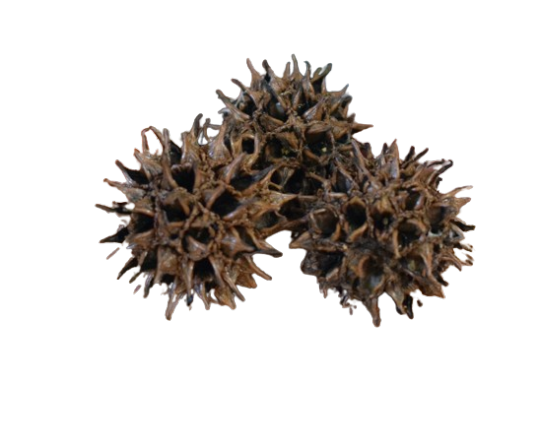
Different magical uses
~ Tailesments and Amulets:
Sweetgumballs can be carried on a person to provide protection, attract prosperity and abundance, and attract love.
~ Spells
They can be used in spells to ward off negative enegry, add extra power to a spell, break hexes and curses, can be added to witches bottles. They can be dressed in oils and herbs and place them on the path of a love interest. They can be powdered to be used in a hot foot spell.
~ Charm Bags
Place them in a charm bag with crystals and herbs to make a strong protection tailesment.
~ Altar Decorations
Place sweetgumballs on altars to keep evil spirits and unwanted guests away and draw in good luck. They can also add extra power to any altar workings.
~ Bath Products
Add to bath salts, oils, or any other body product to promote healing.
~ Home Decorations
Place sweetgumballs above doorways to ward of evil energy in the home and attract good energy. They can also be added to wreaths and wind chimes.
~ Cleansing Rituals
Burn them as part of a ritual to cleanse a person or space.
~ Fertility and Childbirth
Use them to promote fertility and healthy childbirth.
~ Stuffed Burrs
Fill them with herbs, ash, crystals, blood, knots, or affirmations into a burr and use wax to seal it up for long-term protection.
~ Communing
Use them to help with mediumship and contacting spirits.
~ Charging
Place near tools, amulets, or other magical items to charge them.
~ Offerings
Use them as offerings on a altar or within nature.
#folk catholicism#folk magic#appalachian folk magic#catholic witch#christian witch#catholic#godlovesyou#god#witchcraft#witchy
101 notes
·
View notes
Text
Book Review: Wild Witchcraft by Rebecca Beyer

TW: Alcohol mentions and tallow mentions. Poison Path things as well.
This is: Wild Witchcraft by Rebecca Beyer
Rating: 9/10
Pros: An amazing outlook into animism, herbalism, and foraging in a safe, sustainable and non-appropriative way! The instructions on how to garden were very to the point and explained some complicated ideals in an easy to digest way, I think one of my favorite quotes from the book that stuck with me while reading was,
“Just when I think magic has been cut down and paved over; a dandelion has pushed it’s way out of the cracks in the cement.”
I hope that quote helps you understand what sort of writing to expect out of this book! As someone that grew up learning planting from my Papaw who took classes on the subject after getting out of WWII through a governmental program and was a farmer before that, some of the information on growing was things I already knew. But for a beginner just looking into ‘wildcrafting’ or foraging or just plain growing your own herbs for witchy things?
Get this book.
The author, while an herbalist, breaks down each plant she mentions and includes plenty of warnings and suggestions for use both magical and holistically. She covers the poison path in a very easy to understand way while making sure you understand it’s not a beginner’s thing, and certainly not one to take without serious consideration first. The author takes careful note of Indigenous practices and makes sure to drive it home that their voices are to be heard over anyone else’s when it comes to taking care of American land. There are so many rituals and remedies included in this book that I have a feeling I’ll be referencing it quite a lot, and not just for the gardening and foraging tips!
Did I mention the entire 11 pages of a bibliography in the back?? No? Well there’s that too. My academic heart is thrilled.
Cons: Honestly? The only real con I have is that the author spends a chunk of time going over the Wheel of the Year which is a wiccan construct in a book that otherwise doesn’t have any wiccan imagery or practices up until this point. It feels…weirdly thrown in? But she also includes multiple folk traditions that were common amongst those particular time periods so…it is worked in but it still feels a little odd and jarring to me.
The author also mentioned the use of tallow as a commonly used oil for salves, which is correct but some people are uncomfortable with the idea and I understand that! Since the author has tincture recipes as well she does mention the use of alcohol in steeping purposes.
Overview: Animism, foraging, herbalism, and being safe to the environment. Good stuff all around!
#buggy's book reviews#Wild Witchraft is such a good little book!#witchblr#folk magic#forraging#animism#herbalism#Appalachian Folk Magic
534 notes
·
View notes
Text
A recurrant pattern on the interwebs
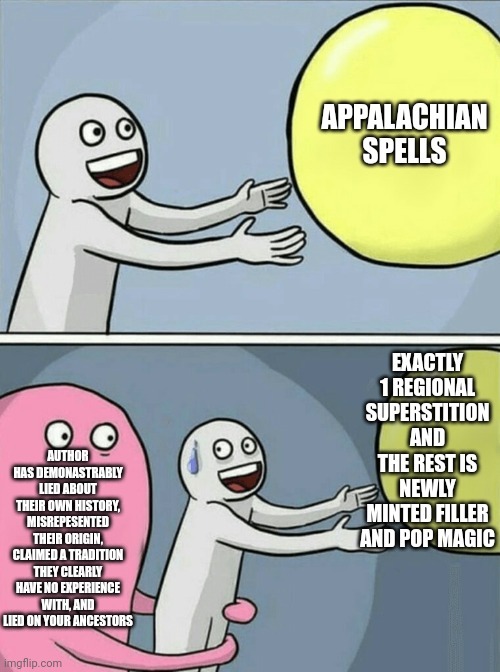
And the filler is stolen, too!
60 notes
·
View notes
Text
It's really infuriating to see so many new books on appalachian folk magic, only for those books to promote new age spirituality as if it has anything in relation to appalachian folk magic. And many people believing what these people write are people who wanna practice appalachian folk magic, then later promote classist stereotypes about appalachian locals.
215 notes
·
View notes
Text
APPALACHIAN FOLKLORE 101
Appalachia has a rich history in the united states, which goes farther back than most tend to give it credit for. The Appalachian mountains are millions of years old, and humans have only lived in the region for 16,000 years or so, which means the mountains are bound to hold some mysteries and legends.
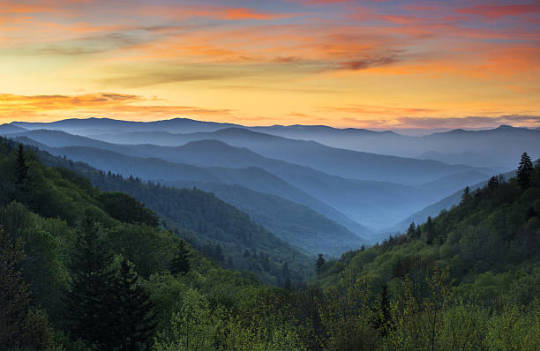
Many of these stories, and folk practices originate from the Native Americans, specifically Cherokee, and are mixed in with the superstitions brought over from the old world specifically English, Irish, and Scottish. As well as the practices brought over from the African Continent During the Slave Trade.
The Native population assisted the early settlers in Appalachia with ways to survive the area, grow food, and even forage for one of Appalachia's staple foods, RAMPS!!!
Let's delve into the history of Appalachian Folklore and the origins of everyone's favorite stories.
Cryptids and Myths
This is one of the most famous aspects of Appalachian folklore and one which outsiders know the most about, Appalachian Myths and their Cryptids that follow. Below I will go over a few of the more famous ones, which many have learned about, either second-hand or through living in the area.
The Moon-Eyed People
There was a group of humanoids called the Moon-Eyed People, who were short, bearded, and had pale skin with large, bright eyes. They were completely nocturnal due to their eyes being extremely sensitive to light. Although not mythical, they were considered a separate race of people by some. The tribes viewed them as a threat and forced them out of their caves on a full moon night. They were said to have scattered to other parts of Appalachia as the moon’s light was too bright for their eyes. There are some early structures that are believed to be related to the Moon-Eyed People, dating back to 400 BCE. Some theories suggest that they were early European settlers who arrived much before Columbus discovered the Americas. Other theories suggest they were people who had Albanism.

Image of The Moon Eyed People Statues in Murphy, North Carolina
Spearfinger
Spearfinger is a Cherokee legend of a shapeshifting, stone-skinned witch with a long knife in place of one of her fingers. She often was described as an old woman, which she would take the form of to convince Cherokee children that she was their grandmother. She would sit with them, brush their hair until they fell asleep, and then kill them with her “spear finger.” She had a love of human livers which she would extract from the bodies of those she killed. It was said she left no visible scars on her victims. She carried her own heart in her hand to protect it, as it was her one weakness. As the legend goes, she was captured and defeated with the help of several birds that carried the information to defeat her. Though she has been destroyed, sometimes you can hear her cackles and songs throughout the mountains.

Image of SpearFinger Cherokee Legend
W*ndigo
This spirit is said to go to where its name is called allowed so since most of us already know the name I won't be writing it out in completion. So out of respect for some of our native readers, it will remain censored
The W*ndigo is a creature, sometimes referred to as an evil spirit, that is said to be 15 feet tall with a body that is thin, with skin pulled so tight that its bones are visible. Many native legends view it as a spirit of greed, gluttony, and insatiable hunger. It is a flesh-eating beast that is considered most active during the colder months, and its presence is easily felt and smelt. It has been described as having a distinct smell of rot and decay due to its skin being ripped and unclean. It produces an overwhelming urge of greed and insatiable want. Most notably, it is not one to chase or seek after its prey; instead, it uses its terrifying mimicry skill. It often mimics human voices, screams, loved ones, or anything that might entice its victim to come to it. In some cases, it is believed the W*ndigo is a spirit that can possess other humans and fill them with greed and selfishness, turning them into W*ndigos as well.
Appalachian Folk Practices
Many of the common Appalachian folk practices stem from things the Native Americans and Enslaved Africans taught them mixed in with cultural practices from Europe. Here I will go over some of the most common practices done by the Appalachian people
Water Dowsing
water dowsing is a practice that has been done for hundreds of years in many different cultures. This practice was brought over by the European settlers and was how many people of the time found where to dig for their water. The practice itself is simple in nature, you take a forked branch from a tree and hold it in both hands and walk around once the stick points down due to the electromagnetic current that's where you dig your well.
this isn't exactly the best way to find water but many people still do it to this day.

Image of Someone Using A Dowsing Rod
Bottle Trees
This practice originated in the Congo area of Africa, in the 9th century A.D. brought to America by the slave trade, in the 17th century. Bottle Trees, were popular in the American South and up into Appalachia, the spirits are said to be attracted to the blue color of the bottles, and captured at night, then when the sun rises it destroys the evil spirits.
This is still practiced in the modern era by many Appalachian Folk Practitioners
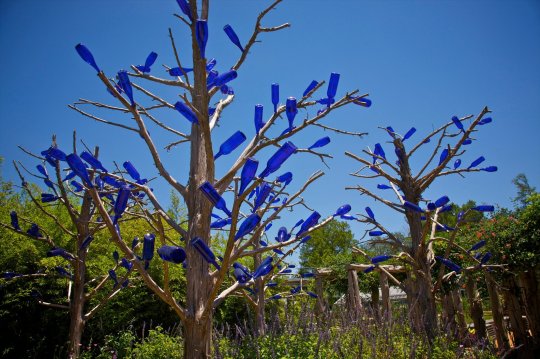
Image Of Bottle Trees
SIN EATING
This practice originates from the Ancient Greeks and Egyptians, it branched to many different cultures and has been practiced since antiquity by many Christian and Catholic tribes. And later making its way to America via immigration. The process was once a profession in Appalachia, in which food was placed on or near the deceased and a person dressed in all black would eat the food absolving the dead of all of their earthly sins. This essentially cemented their ability to get into heaven. The practice while sparsely done any more as a profession, it can still be found in many peoples funeral services to this day around the world.
Many cultures still do this practice and the sin eaters usually choose to hide their identity as the practice is seen as taboo to this day.
Popular Herbs To Forage In Appalachia Folk Practices
Wild Leeks or RAMPS!!!
Allium tricoccum, are a species of wild onion native to North America. They are a delicacy, and hold a special place in the hearts of many Appalachians. Native Americans such as the Cherokee ate the plant and used it medicinally for a variety of purposes including as a spring tonic. Early European settlers learned how to Forage from the Indigenous People and continued to eat and use ramps medicinally. Ramps provide many nutrients and minerals and historically have been used to nourish people after harsh winters.

*RAMPS poisoness Look Alike
False hellebore (Veratrum) is a highly poisonous plant that can be mistaken for a prized wild edible, the wild leek, or ramp (Allium tricoccum)
Chicken of the Woods
Laetiporus sulphureus. Chicken of the woods is a sulphur-yellow bracket fungus of trees in woods, parks and gardens. They are delicious and are loved by many foragers, Native Americans, and Appalachians alike. The Native Americans taught the early settlers that these were edible and have been a favorite ever since. Chicken of the Woods is most likely to be found from August through October, but it can be found as early as May and up to December depending on where you live.

*These have a poisoness look alike, Jack O Lantern mushrooms
The Jack-o'-lantern mushroom should not be eaten because it is poisonous to humans. It contains toxic chemicals that can cause severe stomach upset accompanied by vomiting, diarrhea and headache
PawPaws
The Pawpaw Asimina triloba, is well loved by Appalachian locals as a native fruit with a tropical taste. Pawpaw fruit is the largest tree fruit native to the United States, and its custard-like flesh has been said to taste like a combination of banana, pineapple, and Mango. The pawpaw has been used by Native Americans for centuries for both its fruit and its medicinal properties. Many tribes, including the Osage and Sioux, ate the fruit; the Iroquois used the mashed fruit to make small dried cakes to reconstitute later for cooking. PawPaw season is late summer, look for the smell of rotting fruit, eat the ones that are squishy to the touch.

*They resemble mangos on the trees, many options to eat the ones that are on the floor already as they usually have ripened, but you can also ripen them at home.
Appalachia has a rich and beautiful history filled with magic and delicious food. But the only real way to learn about Appalachia is to visit it. Go and speak with locals, learn about the history, their delicious foods, and powerful Grandma magic, and you too will fall in love with Appalachia.
Thank you for sitting down and having Tea with me on the Other side of the Great Divide
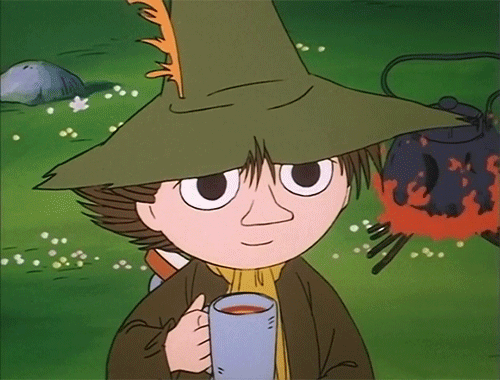
#witchcraft#ritual#occultism#esoteric#occult#spirit work#magi#magus#magick#witch#witchy vibes#witches#witch tips#appalachian folk magic#appalachia#appalachain mountains#american folklore#folklore#folklorist#appalachian culture#foraging#WanderingSorcerer
595 notes
·
View notes
Text
Two Banishing Powders from a Southern Folk Witch

In Southern folk magic, the formula used for a banishing spell varies a little bit based on whether you want to banish an actual person (basically getting them to leave you alone) or a spirit/energy/abstract concept.
Banishing formulas for getting rid of living people tend to focus on causing irritation and discomfort to get someone to leave, which may be less effective if they don't have a physical body. Banishing formulas for spirits/energy are more about deep cleansing and making the space inhospitable for undesirable spirits. The herbs and minerals a practitioner might reach for are different in these two situations.
Below are two all-purpose banishing formulas from my practice: one for living people, and one for spirits.
GTFO Powder
For getting rid of unwanted (living) people.
You will need:
The spiciest red pepper flakes/powder you can find (If you like spicy food, use something so hot you can't eat it in large amounts. I like spice and I use Szechuan pepper flakes, but cayenne will work, especially if you know the person you want to banish doesn't like any spice at all in their food. Discomfort is the goal here.)
Black pepper (Used here to cause mild inconvenience/discomfort/bad luck)
Salt (Good, old fashioned banishing)
(Optional) dried, crumbled wasps nest*
(Optional) dirt from the side of a busy road or highway**
*This is actually much easier to find than you'd think, but be careful not to get stung! This is a traditional ingredient in Southern folk magic because wasps are known for how viciously they protect their homes. Fair warning: this is a mean ingredient (since its purpose is to cause pain/discomfort), so I'll leave it up to you whether to include it or not. If you're dealing with a stalking or abuse situation, wasps nest can give you the extra oomph you need to help keep the abuser from returning.
**Only include this if you're trying to make someone physically leave your space or relocate to a different geographical area. And PLEASE be careful collecting this dirt! My advice is to try to collect it during a less busy time of day and to stay several feet away from the actual road.
How to Use It:
When you mix up this powder, speak over it and state your intention. You can enchant this powder for all-purpose banishing, or you could mix up a batch to banish a specific person. Either way, it is important that you tell the powder what it is meant to do. I like to speak directly to the spirits in the powder and ask them for their help.
Traditionally, you would use this powder by sprinkling some in your target's shoes, but that isn't always possible. You can use it in poppet spells by adding it to the feet of the poppet for the same effect. You can also use it to dress candles, add it to jar spells, or incorporate it into other types of banishing spells. Warning: do not burn this powder, as it can cause irritation or injuries to the lungs.
If you need to get rid of a specific person, you'll want to customize the powder to only work on them. The easiest way to do this is with a taglock (an item that has a physical connection to the target). Some of their hair would be ideal, but you can also use a photo of them or even a piece of paper with their name and address written on it, like you were addressing a letter. You'll want to burn the taglock to ash, then mix this ash into the powder. Make sure you burn it outside, because the smoke will be unpleasant.
You can use this powder to keep someone away from your home or another building by sprinkling a line of it across all entrances to the building. If you do this, make sure you've customized the powder for that person with the method above -- otherwise you may accidentally banish ALL visitors.
Ghost-Be-Gone Powder
For getting rid of unwanted spirits or psychic energy. Can also be used to banish non-physical things, like an illness or a bad habit.
You will need:
Asafoetida*
Salt (Again, used here for good, old fashioned banishing)
Garlic (You know how garlic is supposed to repel vampires? That's basically what it's doing here.)
Rosemary (Used for cleansing and banishing)
(Optional) dirt from a church, temple, or other place of worship**
*Honestly, I've used asafoetida by itself for banishing and gotten really good results. This is definitely the Big Daddy of cleansing herbs in Southern folk magic. You can usually find this in international grocery stores or get it online for fairly cheap, and it's one of the few herbs I think are worth going out of your way to get. Warning: a lot of people complain about the smell of asafoetida, but it honestly just smells like a stronger, more pungent garlic to me so your mileage may vary.
**While dirt from a church is traditional, use something tied to a religion YOU believe in. If you aren't Christian, don't use church dirt. For myself, I might use dirt from the Wiccan temple near my home or from another pagan holy site. The point here is to call on your personal spiritual allies for help. If you are an atheist or agnostic, just leave the dirt out entirely.
How to Use It:
When you mix up this powder, speak over it and state your intention. You can enchant this powder for all-purpose banishing, or you could mix up a batch to banish a specific spirit. Either way, it is important that you tell the powder what it is meant to do. I like to speak directly to the spirits in the powder and ask them for their help.
To use this powder to remove a spirit from your home, use it to clean your floors. You can sprinkle it on the floor, let it sit for a few minutes, and then sweep or vacuum it up.
I don't recommend burning this powder as incense, but you can use it in spells. You can place a ring of it around the base of a black candle or add some to a jar spell, for example. You can also use this to cast a circle around your spellwork if you want to protect it from interference in the spiritual realm.
A Note on Cultural Appropriation
Every time I post some of the more folksy parts of my practice online, I get asked whether it's okay for others to use these spells. Specifically, people want to know if these spells come from a closed tradition or if they have to live in the South to use them.
The folk magic tradition I practice is not tied to any closed cultural practice. I will never post anything from a closed practice online. So yes, you can use these powders no matter who you are or where you are from. You don't have to live in the South or be from the South to practice Southern folk magic, but you will get more out of your practice if you have a connection to the region.
On a related note: some of y'all may have noticed that these powders are similar to formulas used in Hoodoo. The GTFO Powder specifically is very similar to Hotfoot Powder, which is used for a similar purpose in Hoodoo. Hoodoo is a semi-closed African-American tradition that is typically passed down in families or communities. When I post about my practice, I do occasionally get comments accusing me of appropriating from Hoodoo.
Here's the thing: my practice does have some overlap with Hoodoo, because I am in the same geographical region and part of the same regional culture that Hoodoo comes from. Over hundreds of years, ideas get exchanged across racial and cultural lines. Just like some elements of Hoodoo come from European traditions, some elements of white folk magic in the South come from African roots. It's not appropriation -- it's a natural result of living in multicultural communities.
All of this is just to say, what I do is not Hoodoo, but I think of my tradition and Hoodoo as cousins. There's some shared DNA, but also a lot of differences. How I do things might look similar to how a Hoodoo practitioner does them, but the theory or exact ritual process may be different.
#southern folk witchcraft#southern folk magic#folk witchcraft#appalachian folk magic#southern appalachia#folk magic#banishing#banishing powder#banishing spell#witchcraft#witch#green witch#green witchery#kitchen witch#kitchen witchery#long post#mine
294 notes
·
View notes
Text

The Appalachian region is known for its folklore and storytelling. Stories of myths, monsters, and ghosts. There is currently a trend going around on TikTok where people list the “Rules of Appalachia.” These rules often include: Do not go in the woods at night, do not whistle in the woods, and do not look in the trees.
Should you be scared of these mountains….well, I don’t think so.
The eyes that you see shining in the trees at night..well that’s just an old possum searching for its dinner.
The sounds you hear from inside the forest at night…that’s just the trees talking with the wind.
The shadows you see moving around the bed of the forest…well, that’s just the moonlight pushing through the Laurel.
And if you choose to whistle in the forest at night, the only thing you’ll hear in return is your own echo.
There was a time before technology that people needed a way to entertain each other so they turned to storytelling. There’s a sense of mystery for the unknown and it gives us license to our imaginations.
The Appalachian mountains are old, but they are full of wisdom and I’m surrounded by peace here, rather than fear.
(Kim Wright)
#appalachian#appalachian mountains#north carolina#appalachian culture#appalachia#western north carolina#the south#nc mountains#appalachian folk magic#appalachian folklore#folklore#southern#southern gothic#appalachain gothic
71 notes
·
View notes